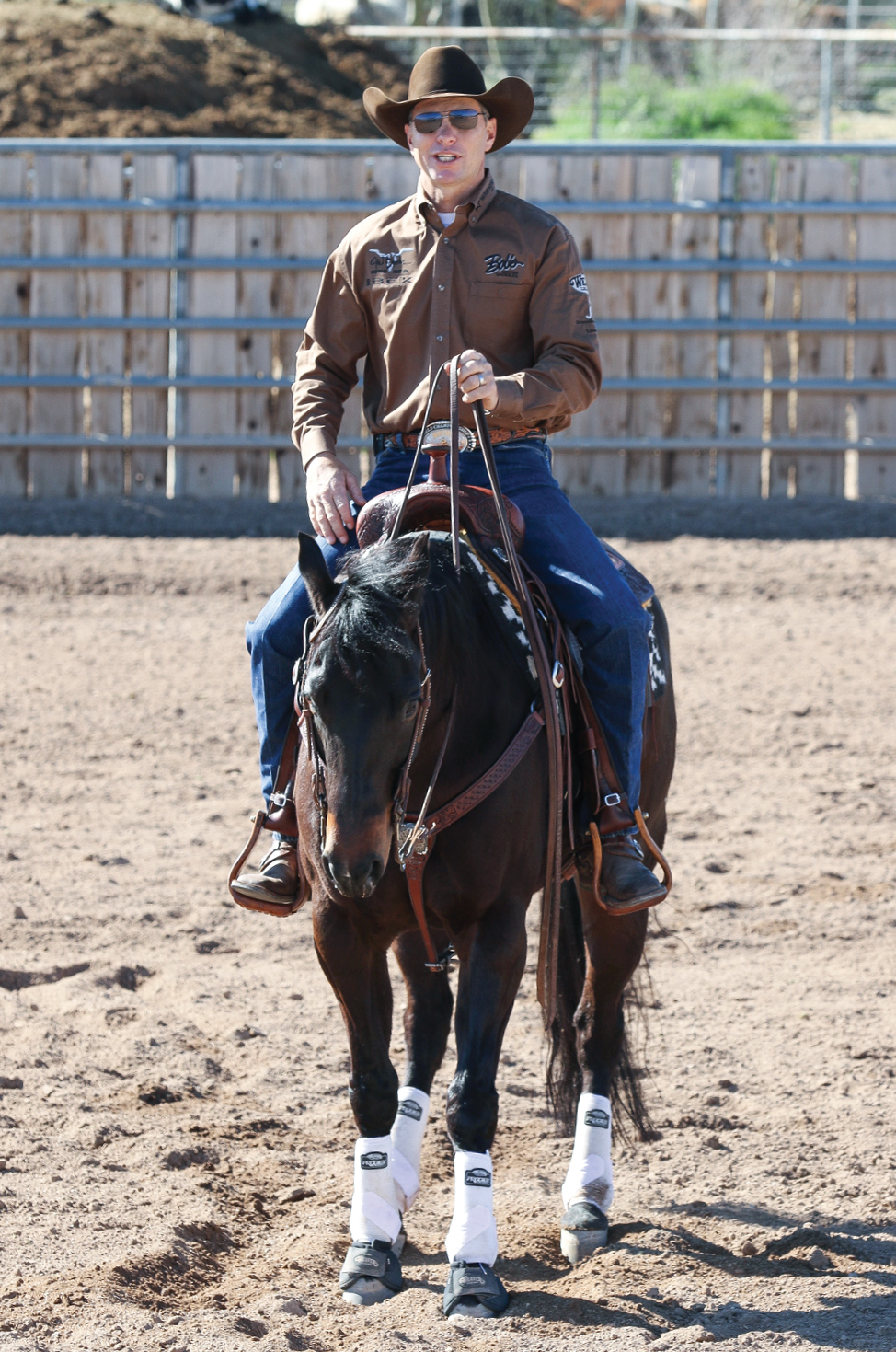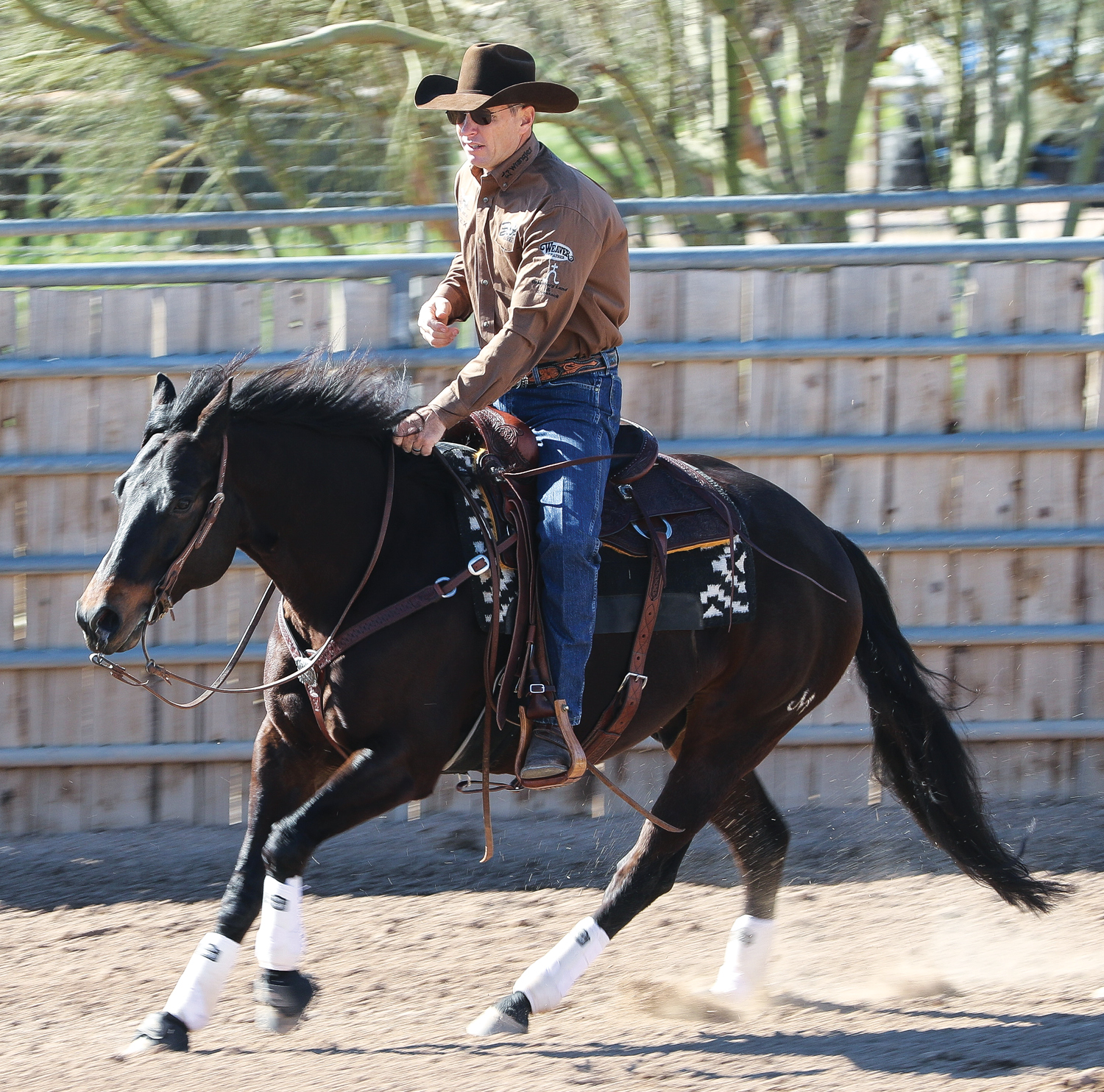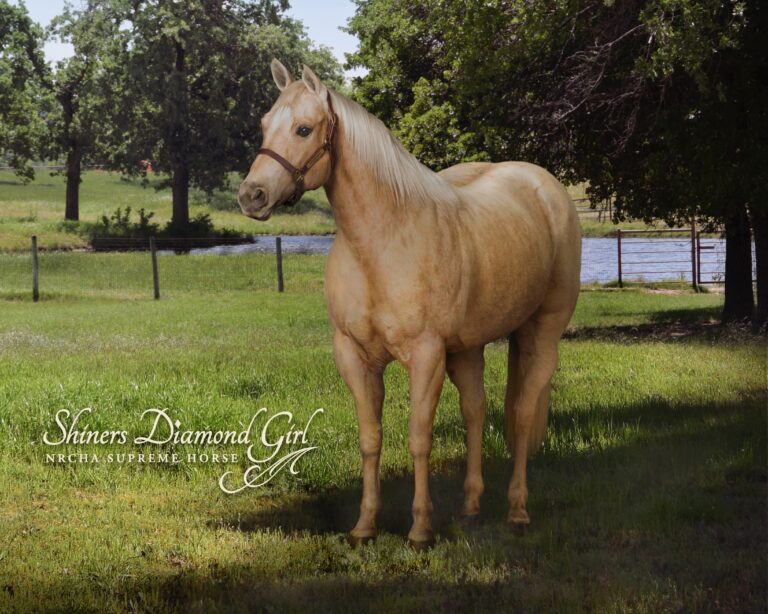Knowing where you are in the arena at all times is important, especially if you compete in pattern events that require you to use the entire pen. Being able to gauge where you are in the arena in relation to the fence helps you properly utilize the real estate you have so your horse can perform at his best.
At home you know your arena, what the size of it is, where the gates are, where your horse likes to lean, but when you’re traveling to different arenas for competition, your sizing is going to differ every time you step in the pen, which is why it’s important to take time to get familiar with it.
Get Comfortable at Center
Before you start this exercise, make sure you’re comfortable with finding the center of the arena. If you’re at a show or an unfamiliar arena, be sure to find it before you show. Knowing how to find center is important, especially during a pattern where you’ll come back to the middle of the arena multiple times in one ride. It’s also a common spot for judges to sit during a class.
Take your time to study the arena to see how it’s shaped so you can plan out your circles, and other maneuvers, ahead of time.
[MORE WITH BRAD: THE PERFECT CIRCLE]

Nichole Chirico
Find Your Bases
Imagine there’s a baseball diamond on the circle you’re about to run. Home base is your arena center, first base is the first quarter of your circle, second base is the top side of your circle, and third base is the third quarter of your circle. Creating these checkpoints within your circle allows you to check in with yourself and your horse to make sure you’re staying on track.
Try gear like Brad’s; Weaver Athletic Boots, Weaver bell boots, Weaver saddle pad, and BEX Sunglasses.
Products we feature have been selected by our editorial staff. If you make a purchase using the links included, we may earn a commission. For more information click here.
I even recommend walking or trotting the bases at first so you can study where they are in the arena and get comfortable with the shape your circle will be at faster speeds.
Once you’re ready, start at home base (center of the arena). As you prepare for a lead departure look up and ahead to where you want to go (first base). If you need to exaggerate your head movements at the beginning to find your spots, that’s OK.
As you start loping and head to first base, go through your checklist. Did your horse lope off straight and in the bridle? Did he lean into the circle or listen to your cue? Does he have cadence and rhythm in his lope? As you pass first base, it’s time to turn your head and look for second base, which is the topside of the circle. Looking ahead and planning your path will help keep you from cutting off the top of your circle and creating an oval shape. This will also help you find your spots for other maneuvers.
[MORE WITH BRAD: CORNER CONTROL DOWN THE FENCE]

Nichole Chirico
At the completion of second base, check back in with your horse to see that he’s still listening to your cues and staying on the path you’ve drawn out in your head. As you head to third base, remember to keep your eyes up and look where you’re going. It’s easy to get ahead of yourself and start thinking about the close of your circle. As you reach third, now it’s time to focus on the close of your circle and head back to home base. Because you know where center is, you’ll know exactly where you started and can head back to that point.
Once you reach home base, you can continue running the bases to get even more familiar with the arena or ask your horse to slow down or stop. This exercise will also help you prepare for a shutdown in the center of the arena; at third base, you can check in with your horse to make sure he’s ready to shut down. If you notice his responses aren’t as quick as you’d like them to be, you’ll be aware of where you are in the circle and be able to start cueing for your shutdown earlier so you have plenty of time to make your mark.
[MORE WITH BRAD: AUDIO LESSON EVALUATING YOUR HORSE’S WELLNESS]






